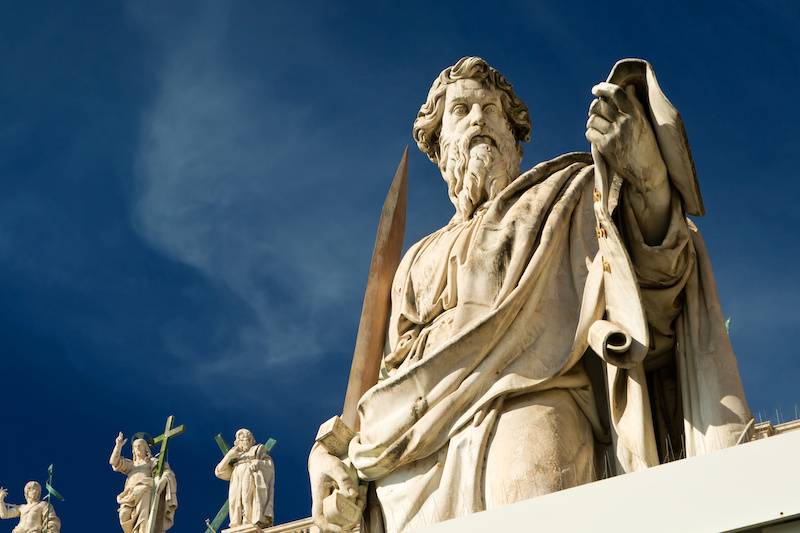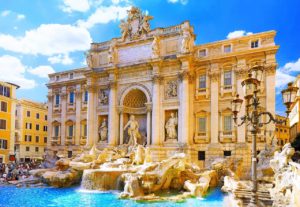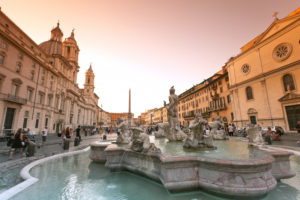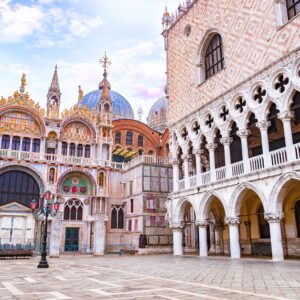Among the most important and heartfelt celebrations for the Romans, we must mention the feast that historically honors the city’s patron saints. The month of June, and more specifically June 29, is automatically associated with the commemorations of Saints Peter and Paul, figures of fundamental importance for Christianity and the history of Rome. In this article, we will explore the lives of these two saints, why this feast is celebrated on June 29, and the religious and non-religious celebrations organized every year for this significant day, attracting both Romans and tourists who visit the city during this period to experience life like true locals.
The Lives of the Two Saints
Peter, the Fisher of Men: Simon, who changed his name to Peter when he decided to follow Jesus along with his brother Andrew, was the first among the disciples to recognize Jesus as the Messiah and the Son of the living God. It was for this reason that Jesus designated Peter as His successor, the foundation of His Church, and the shepherd of God’s flock. After the Messiah’s ascension to heaven, it was Peter who initiated the preaching of the Good News, traveling throughout the known world until he reached Rome, where he met his destiny by the will of Nero. According to legend, while trying to flee Rome to avoid arrest, Jesus appeared to him. The apostle asked, “Quo vadis? (Where are you going?)” and the Lord replied that He was going to Rome to die again. Hearing these words, Peter turned back, allowed himself to be arrested, and accepted martyrdom. Peter chose to be crucified upside down, feeling unworthy to die in the same manner as his beloved Master. He was buried on Vatican Hill, and over time, the Basilica of St. Peter was built around his tomb, which still houses his sepulcher.
Paul, the Preacher of Christianity: Paul, whose original name was Saul of Tarsus, converted to Christianity without ever meeting Jesus. He is remembered as the first theologian of Christianity and the first preacher of the Word of God to the pagan world, parallel to Peter’s evangelization activities throughout the Mediterranean. In the early part of his life, Saul of Tarsus was a fierce advocate of Jewish traditions, dedicating himself to persecuting Christians, whom he saw as a dangerous sect to be eradicated. During one of his journeys, he experienced what legend describes as his conversion: on the way to Damascus, Saul was struck by a blinding light, and a voice said, “Saul, Saul, why do you persecute me?” After this miraculous event, he changed his name to Paul, marking his conversion and the beginning of his mission as an indefatigable missionary of Jesus, eventually arriving in Rome as a prisoner. He was beheaded during Nero’s persecutions; his remains are still preserved in the Basilica of St. Paul Outside the Walls.
The Origins of the Feast: Why June 29?
The feast of Saints Peter and Paul has ancient roots dating back to the early centuries of Christianity. The annual celebration on June 29 commemorates the martyrdom of both saints and their immense influence on the spread of Christianity. But why are they celebrated together? Peter and Paul were very different apostles, yet both are remembered as pivotal figures in the history of the Church, sharing the same feast day. According to some records, June 29, 267 AD, is the date when both saints were martyred in Rome during Nero’s persecutions. However, it is highly improbable that their deaths occurred on the same day of the same year. More likely, the choice to commemorate both saints on June 29 aimed to convert a pagan festival into a Christian celebration. June 29 coincided with the feast of Romulus and Remus, the founders of Rome. Christians probably wanted to honor the Church’s founders on the same day, symbolically celebrating the birth of a new Christian Rome.
Celebrations and Rites from Yesterday to Today
The festivity has been celebrated since 258 AD. Until the early decades of the 1900s, June 29 was a grand celebration in Rome, marked by traditional outdoor picnics. Today, Rome still commemorates the saints with a grand festival, featuring a spectacular fireworks display that lights up the southern part of Rome. St. Peter’s Basilica is adorned with a magnificent floral arrangement, and the Pope presents a white woolen pallium to the city’s bishops before kissing the foot of the statue of St. Peter, which is draped in a red mantle for the occasion. Another tradition associated with this important day takes Romans to the Abbey of the Trappist Monks near the Sanctuary of the Three Fountains, where they enjoy a rosette filled with hot chocolate (a specialty of the monks along with eucalyptus liqueur). Visiting the Abbey of the Three Fountains on June 29 has become a tradition not to be missed.
The Representation of the Embrace of Saints Peter and Paul
Christian iconography traditionally depicts the two saints embracing each other. Whether this embrace actually occurred or not, it holds significant symbolic value. These two figures are the pillars of Christianity, men with different experiences and vocations for most of their lives, who for different reasons brought Christianity to the entire Mediterranean basin. Paul always recognized Peter’s primacy and authority as head of the Church, while Peter acknowledged the value of Paul’s doctrine.
Conclusions
For Romans, the feast of Saints Peter and Paul is not just a religious event but also an occasion to celebrate their identity and connection to the city. The celebrations strengthen the sense of community and offer a moment of reflection on Rome’s Christian roots. Participating in the festivities, masses, and processions is a way for Romans to express their devotion and pride in a tradition that has spanned centuries, manifesting its power at St. Peter’s Basilica, the quintessential place of Christianity, and at the Basilica of St. Paul Outside the Walls in the eponymous district. A tour to discover this important place of worship is the best way to understand the history of Christianity, from its spread to the present day.















